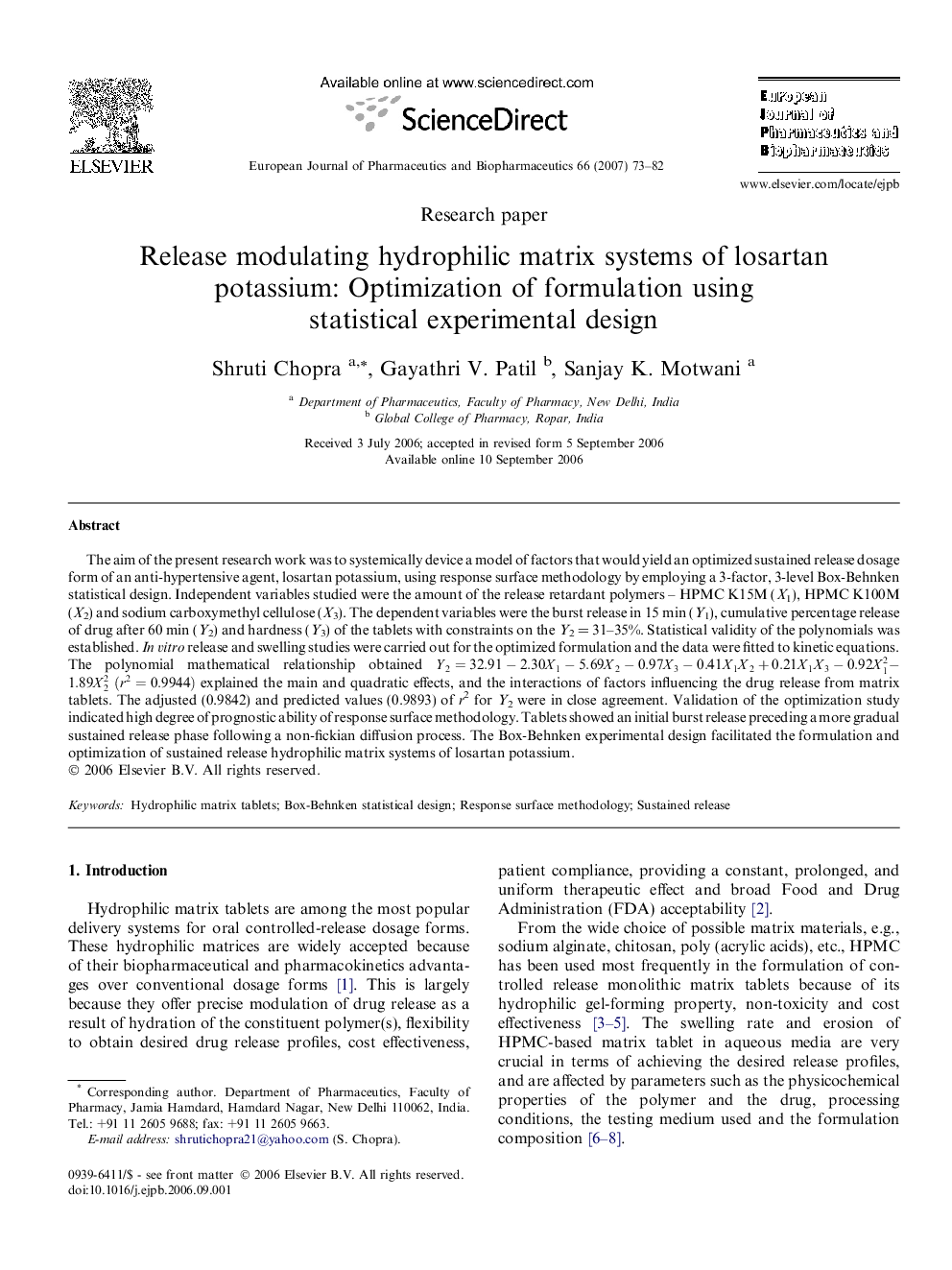| Article ID | Journal | Published Year | Pages | File Type |
|---|---|---|---|---|
| 2084960 | European Journal of Pharmaceutics and Biopharmaceutics | 2007 | 10 Pages |
The aim of the present research work was to systemically device a model of factors that would yield an optimized sustained release dosage form of an anti-hypertensive agent, losartan potassium, using response surface methodology by employing a 3-factor, 3-level Box-Behnken statistical design. Independent variables studied were the amount of the release retardant polymers – HPMC K15M (X1), HPMC K100M (X2) and sodium carboxymethyl cellulose (X3). The dependent variables were the burst release in 15 min (Y1), cumulative percentage release of drug after 60 min (Y2) and hardness (Y3) of the tablets with constraints on the Y2 = 31–35%. Statistical validity of the polynomials was established. In vitro release and swelling studies were carried out for the optimized formulation and the data were fitted to kinetic equations. The polynomial mathematical relationship obtained Y2=32.91-2.30X1-5.69X2-0.97X3-0.41X1X2+0.21X1X3-0.92X12-1.89X22(r2=0.9944) explained the main and quadratic effects, and the interactions of factors influencing the drug release from matrix tablets. The adjusted (0.9842) and predicted values (0.9893) of r2 for Y2 were in close agreement. Validation of the optimization study indicated high degree of prognostic ability of response surface methodology. Tablets showed an initial burst release preceding a more gradual sustained release phase following a non-fickian diffusion process. The Box-Behnken experimental design facilitated the formulation and optimization of sustained release hydrophilic matrix systems of losartan potassium.
